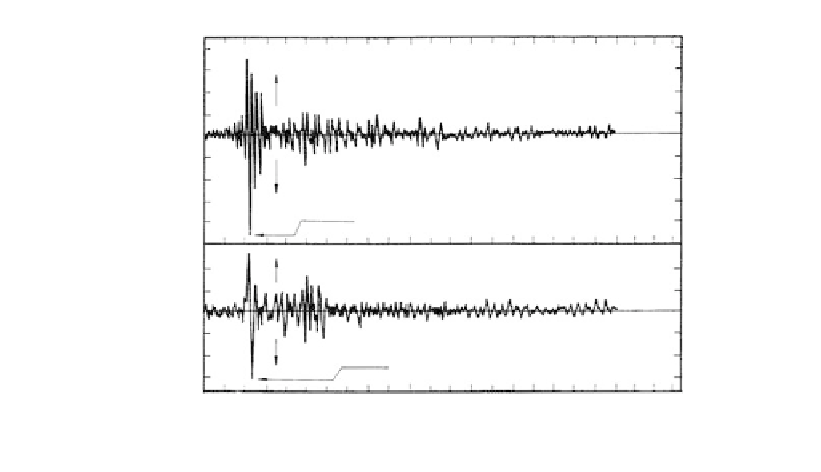Environmental Engineering Reference
In-Depth Information
80
(a)
Surface acceleration
North
40
0
40
South
95 gal
80
(b)
East
Surface acceleration
40
0
40
West
65 gal
Note. 100 gall
acceleration due to gravity
Figure 12.4.
Earthquake accelerograph (USNRC, 1985).
1.0M
1.7
v
160
e
R
(12.7)
L
peak
0.8M
(12.8)
a
20000 e
R
2.0
L
peak
Because of the “400” term in the expression for R, corresponding to a minimum R of
20 kilometres, these equations give low values of ground motion at distances closer than
a few kilometres.
There have been many different attenuation relationships developed around the world.
A seismologist should be engaged to advise on the relationship appropriate for the site.
The attenuation equations discussed above, allow estimation of peak bedrock accelera-
tion at a site. As discussed by Martin (1988), sites underlain by stiff soil and thick cohe-
sionless soil may experience similar peak accelerations to the “bedrock” values. However,
in sites underlain by soft or medium soft clays, or shallow cohesionless soils, the maximum
ground acceleration may be different from bedrock accelerations. Martin (1988) indicates
that for ground accelerations less than 0.1 g amplification may occur, whereas for very
high accelerations (e.g.
0.3 g) the peak accelerations may be attenuated (de-amplified)
due to energy dissipation. He quotes the example of the 1985 Mexico earthquake where
the bedrock accelerations were 0.03 g and the peak accelerations of 0.17 g (at a reduced fre-
quency) were recorded at the surface of soft soil areas. The authors' experience is that,
even for stiff and thick cohesionless soil, amplification may occur for small earthquakes.
Amplification effects can be estimated using computer programs such as SHAKE or
DESRA, using input ground motions from typical accelerograms.
Topographic effects are also important. An accelerograph sited on a ridge high on a
dam abutment, is likely to record significantly higher accelerations than one sited at the
river level, so care must be taken in siting such instruments. An appreciation of the extent
of magnification due to topographic effects can be gained by comparison with the crest
and base accelerations for a dam as discussed in Section 12.6.3.4.
12.2.4
Earthquakes induced by the reservoir
As discussed in ICOLD (1983) and ICOLD (1989c), there is documented evidence to
prove that impounding of a reservoir sometimes results in an increase of earthquake activ-
ity at or near the reservoir.


